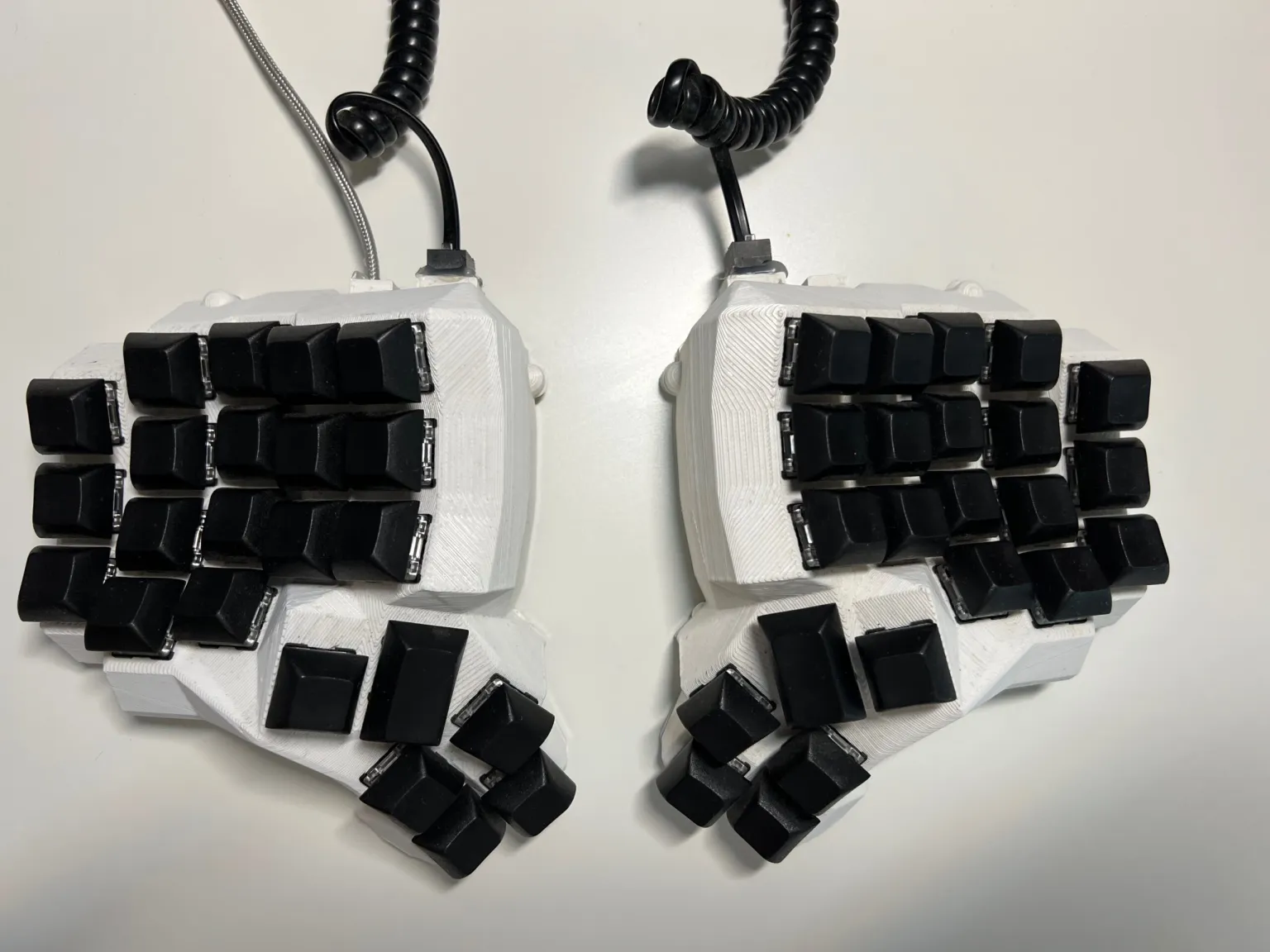This post continues my ongoing blog series on ergonomic keyboards. Today’s topic is the split keyboard.
We’ll answer the question: what is a split keyboard, what types exist, and what are the benefits and drawbacks of split keyboards.
But first, let me clarify the sequence of my posts. The previous article was about Column Staggered Keyboards. While column-staggered layouts are often split keyboards, split keyboards themselves are not tied to any other specific feature. They can come in many different shapes, layouts, and configurations. So, forgive me for slightly mixing up the order.
What Is a Split Keyboard?
The simplest way to imagine a split keyboard is this:
Take a knife and cut your keyboard vertically down the middle. That’s essentially what a split keyboard looks like from a technical point of view.
A more formal definition:
A split keyboard is a keyboard divided into two dedicated halves - one for each hand. Pressing a key that belongs to the opposite half with the wrong hand is not possible without lifting your hand off the desk.
This physical separation is the defining characteristic of ergonomic split keyboards.
The Pain Points of a Standard Keyboard
Let’s consider the standard ANSI QWERTY keyboard, which is still the most popular layout worldwide and the default for most laptops.
When you look at it from an ergonomic perspective, two problems immediately stand out:
- The position of your wrists and forearms is not healthy at all.
- Because there is no physical split, people often use one hand to press keys that should belong to the other.
Ergonomic Misalignment
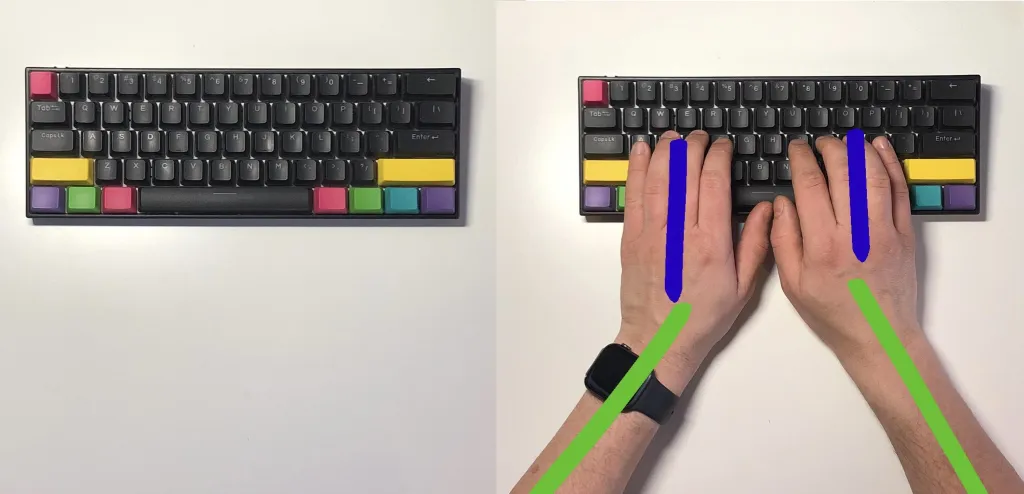
Take a look at the image above. The left side shows a standard keyboard, while the right overlays hand placement. I marked forearms with green lines and hands with blue for clarity.
Notice how the arms and wrists form a funnel shape. Forearms are turned inward, and wrists are bent outward just to place fingers on the home row. This posture is far from ergonomic. It puts strain on your shoulders and forces your wrists into unhealthy angles during typing.
One Hand Helping the Other
The second issue - which doesn’t apply to perfect ten-finger typists - is using one hand to press keys intended for the other.
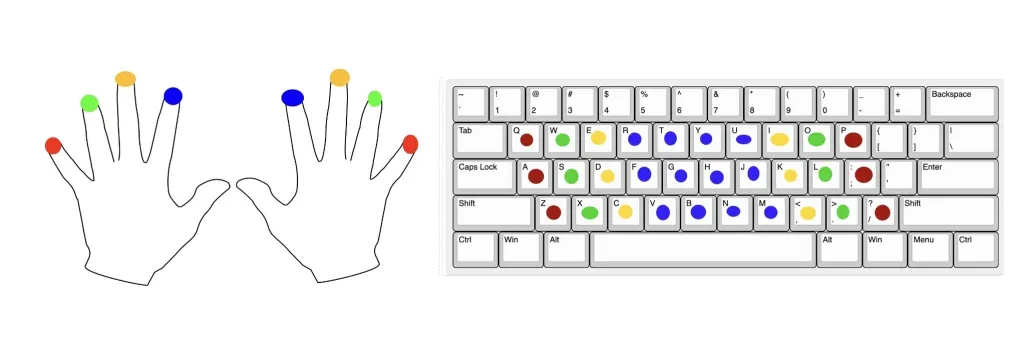
In the diagram above (which you may recall from earlier posts), I marked corresponding fingers with matching colors. Notice how the blue keys, assigned to the index fingers, sit right next to each other. For people who don’t type correctly with all ten fingers, this creates a temptation to use the wrong hand.
A personal confession: I often struggle with T and B. Technically, both are assigned to the left hand, but I frequently hit them with the right - especially when the preceding or following character is far left, or when I’m pressing Shift.
This is one of the subtle but significant issues that split mechanical keyboards aim to solve.
Types of Split Keyboards
Now let’s look at the main types of ergonomic split keyboards I’ve encountered. Each improves posture in slightly different ways.
1. Single-piece Split Keyboard (with a gap between halves)
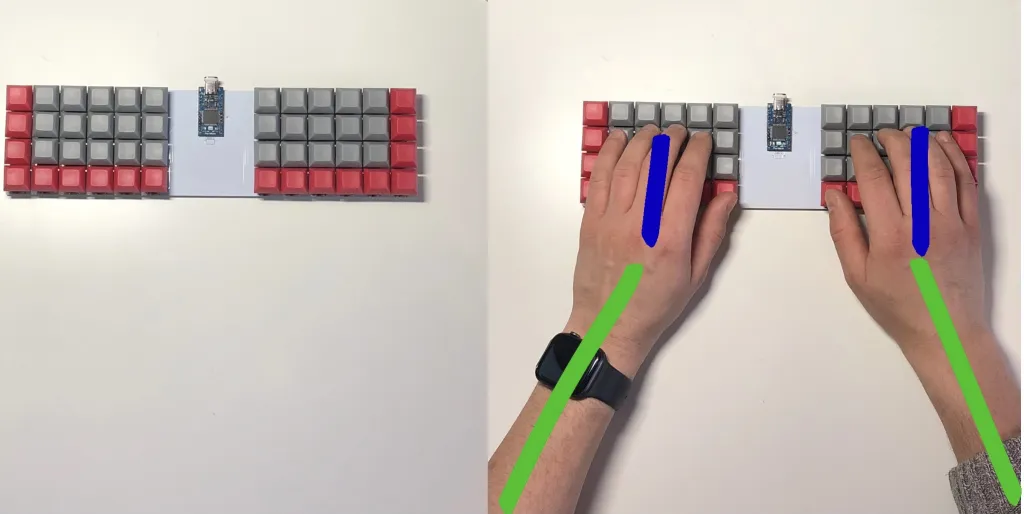
The simplest version is a one-piece keyboard where the halves are separated by a gap.
In the illustration above, you see an ortholinear split keyboard, but the same idea can be applied to a staggered layout (creating small “steps” between inner columns).
- Ergonomic benefits
Compared to a standard keyboard, the inward funnel is wider. Forearms are at a gentler angle relative to the desk, and wrists are less strained. - Dedicated halves
Even a small gap is enough to stop you from cheating by using one hand for keys on the other side.
2. Angled Single-piece Split Keyboard
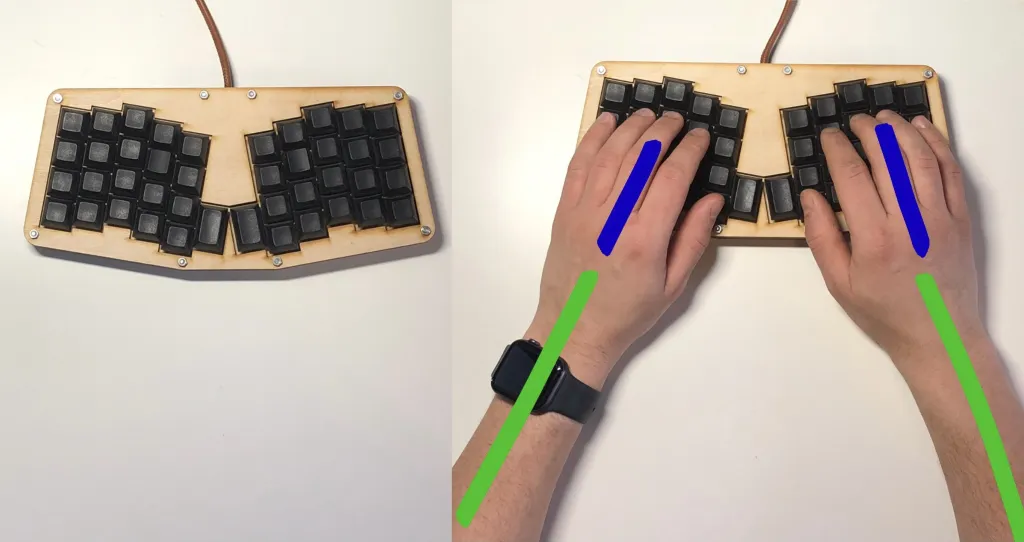
The second type combines the gap with an angled layout - the halves are rotated outward.
- Ergonomic benefits
With angled key clusters, your forearms and wrists align in a straight line, which feels much more natural during long typing sessions. There’s still a slight inward angle, but the improvement is noticeable. - Dedicated halves
As before, each side is clearly assigned to one hand.
3. True Split Keyboard (two separate halves)
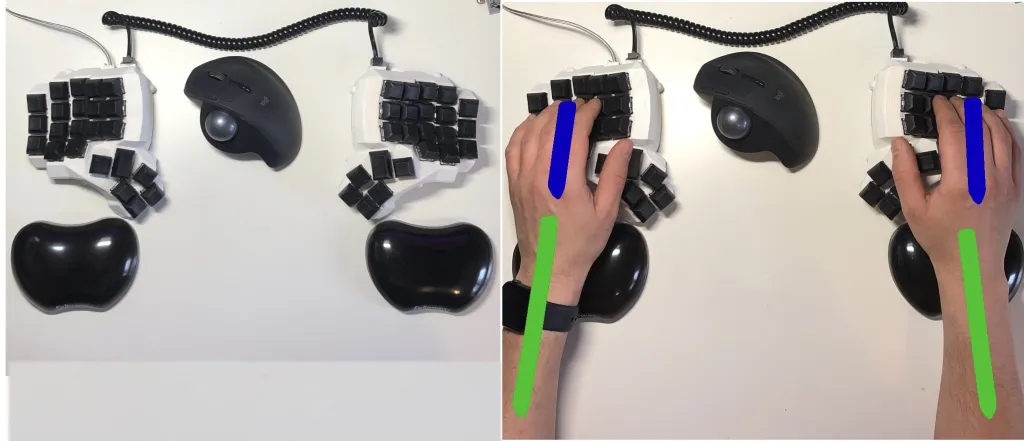
Finally, we have the true split keyboard - two physically separate halves connected by a cable or wireless (e.g., via Bluetooth).
The example above is the Dactyl Manuform.
- Ergonomic benefits
Without question, this is the healthiest position. Your hands and forearms remain perfectly aligned at shoulder width. Better yet, you can adjust the spacing to match your own shoulders, maintaining good posture regardless of body type. - Dedicated halves
Each half is fully independent, handled only by its respective hand.
The Downsides of Split Keyboards
I’ve used all of the above as my daily drivers over the years. Honestly, the only consistent downside I’ve found is typing with one hand.
For example, when watching online courses with a cup of coffee in hand, one-handed typing becomes inconvenient. On a standard keyboard, you can easily stretch across. On a true split keyboard, that’s nearly impossible.
Another challenge shows up in video and audio editing. In my workflow, one hand controls the trackball, while the other should operate shortcut keys on the keyboard. On a true split keyboard, this slows things down because every action is tied to a specific half.
Of course, professional editors often rely solely on the keyboard, making this a non-issue. But for hobbyists like me, who still mix in mouse/trackball use, it adds some friction.
Conclusion
So, should you switch to a split ergonomic keyboard?
- If you value healthier wrist and shoulder posture, the answer is a clear yes.
- If you often need to type one-handed or do heavy video editing with one hand on a mouse, it may introduce some challenges.
Still, for most people spending hours typing every day, the ergonomic benefits of split keyboards far outweigh the downsides.
Whether you go for an ortholinear split keyboard, an angled staggered split, or a fully true split keyboard, each step moves you closer to better ergonomics, comfort, and long-term wrist health.
Final note: I’ve been on this split keyboard journey for years, and I can say it’s one of the most impactful ergonomic upgrades you can make to your workstation.
